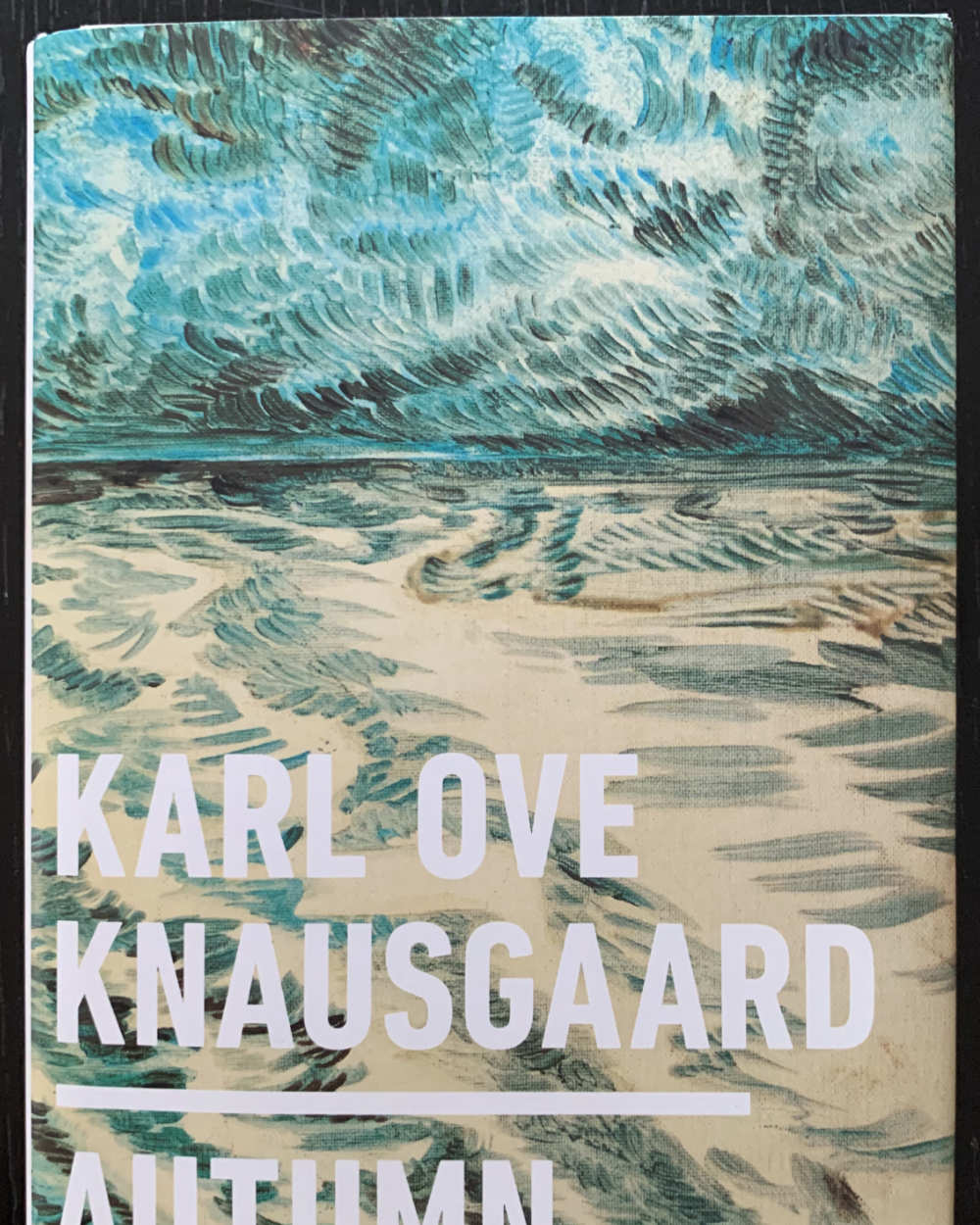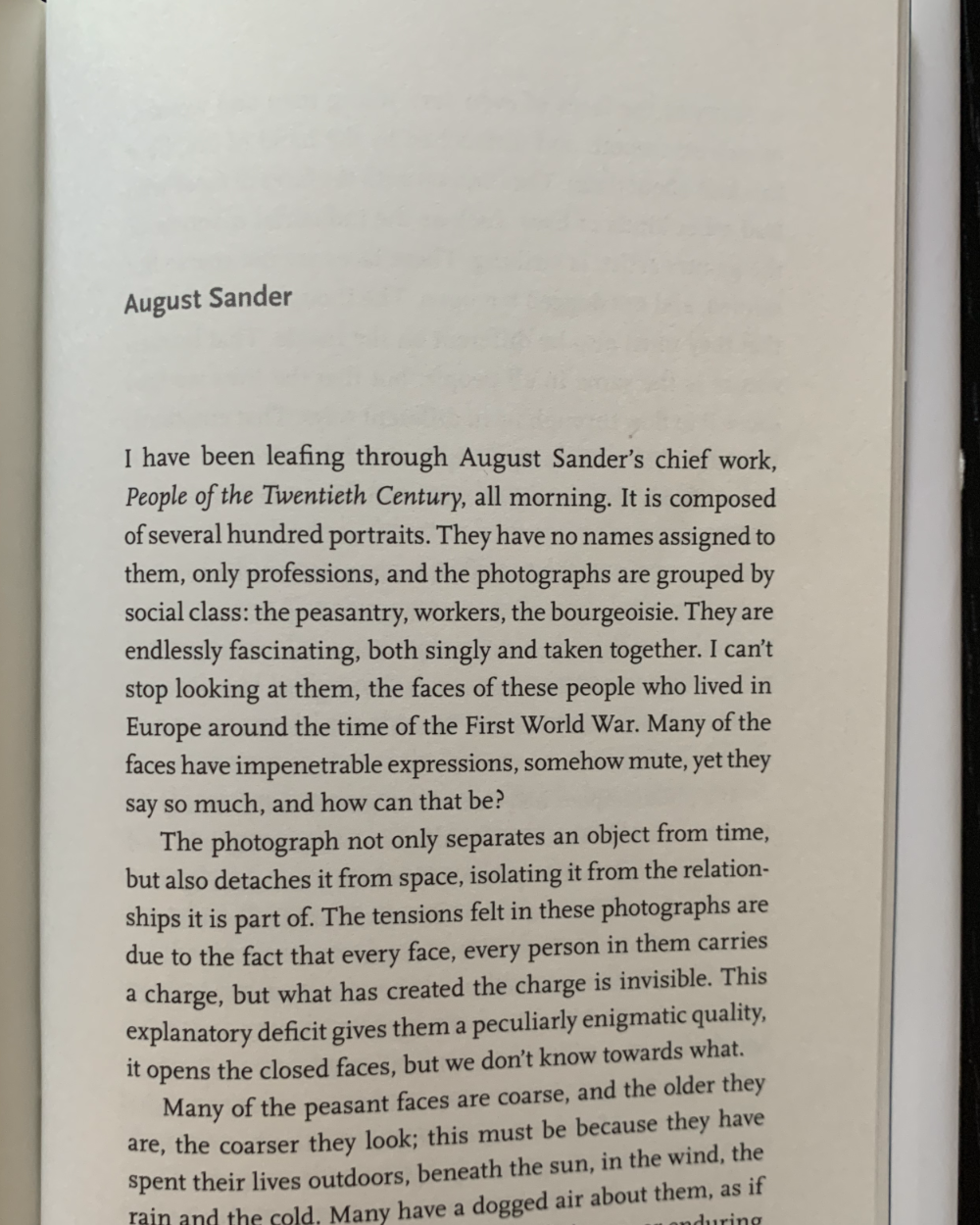Knausgaard’s collection of essays is a joy to read. While the essays in Autumn are all quite good, the real pleasure comes from the physicality of the book. The coarse texture to the dusk jacket.

The pages are a smooth, heavy paper that has a sensuous feel. The illustrations and the printed words look better on this paper, in part because the pages are pleasure to hold and to turn.

Knausgaard has a smart essay on August Sander that hints at the value of printing your work in book form, and the challenge and allure of photography. About Sander’s work, he says (in part):
… They have no names assigned to them, only professions, and the photographs are grouped by social class: the peasantry, workers, the bourgeoisie. They are endlessly fascinating, both singly and taken together. I can’t stop looking at them, the faces of these people who lived in Europe around the time of the First World War. Many of the faces have impenetrable expressions, somehow mute, and yet they say so much, and how can that be?
The photograph not only separates an object from time, but also detaches it from space, isolating it from the relationships it is part of. The tensions felt in these photographs are due to the fact that every face, every person in them carries a charge, but what has created the charge is invisible. This explanatory deficit gives them a peculiarly enigmatic quality, it opens the closed faces, but we don’t know towards what.
These essays, like Sander’s photographs, are endlessly fascinating singly and taken together. They offer a tactile experience that enriches the reading. Their sequence in the book reflect an intentionality and invites us to think about how that order reveals something more than the individual essays can. They encourage us to move slowly through them, perhaps leafing back now and then to make connections to resolve or identify tensions between them.
Similarly, I think, physical photographs encourage us to slow down, to pause, to lay them out next to each other and compare them. If they are printed in a book, the arrangement and grouping tell us more than the individual photographs could. In either case, individual prints or sequences in books, there is a sensual pleasure in holding a photograph that has been printed on good paper.